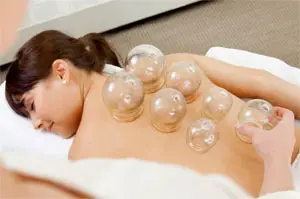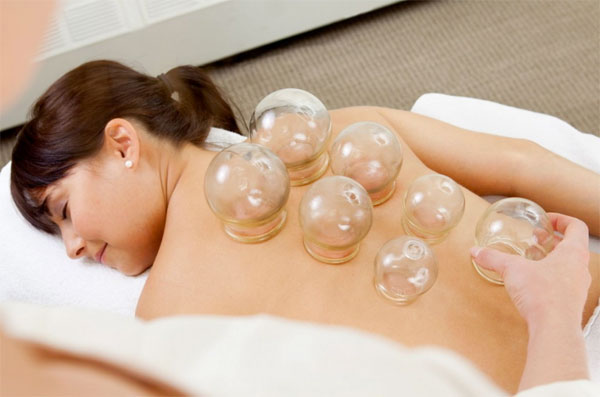There are definitely a number of different treatments that people may see as “out of the ordinary” when it comes to fibromyalgia treatment.
This is likely because the pain can be such a difficult thing to deal with, and as a result, we’re willing to try almost anything in order to try and feel better.
One of the more unique types of therapy that are out there for fibromyalgia symptoms is known as cupping therapy. But what is this therapy and what can it do for your symptoms and your pain? Let’s take a look.
Exploring Cupping Therapy and its Roots
This form of therapy has been used since the days of early Chinese medicine, meaning that it’s definitely something that has been around a good long time.
That being said, the age of it shouldn’t worry you – honestly, it should make you feel a bit more confident in the possibility that it can help you because it continues to be used and people continue to state that it has made a significant difference in their lives.
That should be proof enough that it’s at least worth a try if it has even the slightest possibility of helping.
But, what is it? In short, cupping therapy is a type of therapy that uses cups (yes, like the glass cups that you drink out of) that are placed onto the skin in order to do a number of tasks.
According to Chinese medicine, these particular cups help to remove a number of toxins from inside the skin.
They also are thought to help reduce the amount of pain that you are feeling and, when done correctly, the blood flow in those areas of the body are greatly increased, making it so that the body functions correctly.
Now, how is this supposed to work? There are two main ways that you can end up having it done. You may just lie down or sit and have the glass cups put onto your skin without moving them at all, which is referred to as “Stationary therapy.”
You may also end up having massage cupping, which does exactly as the name suggestions. The glass cups are moved all over your body, providing the same sort of feeling and flexibility that you would get when you are were getting a massage with hands and such.
It seems a bit odd, but it actually feels rather good according to those who have gotten the therapy done on them.
How is Cupping Therapy Useful for Fibromyalgia Patients?
So how does this play into helping you with fibromyalgia? There are a few ways, actually. First, as we mentioned above, it can end up helping you with your blood circulation.
You know how you usually feel stiff, or you have difficulty moving on occasion with your fibromyalgia?
Having better blood circulation can actually end up having a significant role in helping you to feel more comfortable with your pain, and it will help you to feel a lot less stiff – both of which really help when it comes to fibromyalgia management.
Massage, in and of itself, is a huge help for those who are looking to manage their anxiety and learn how to relax more. Because of that, massage therapy is usually a very large part of any therapy program that your specialist will put you in.
It will help you to sleep better at night, you will feel a lot more comfortable, and you will have an easier time moving around overall.
Whether you do it with the cups or you have traditional massage performed on you, it will help provide you with some relief.
If you have fibromyalgia, you have likely talked to your doctor about the trigger points that you have to deal with on a daily basis. These trigger points may end up being on almost any part of your body and could get irritated for any number of reasons.
Sometimes, your trigger points are more sensitive than they would be at other times. Because of this, you want to make sure that you have a grip on where they are and you want to do everything that you can in order to reduce their sensitivity.
Cupping therapy can, likely, help you with this, and in turn, can help increase the blood flow in these areas so that the sensitivity is lessened.
Some people suggest that it may also be able to help you to have a better range of motion, which is something that most people wish to strive for when they are dealing with fibromyalgia pain and other related symptoms on a regular basis.
Injuries are very common in those of us who are fighting off the symptoms of fibromyalgia on a daily basis.
We may feel pain, or we may not notice that something is going on in our bodies that increase the pain. Dizziness and clumsiness are also quite common, which means that we have to be careful when we’re out and about.
Increased blood flow, which cupping therapy has the ability to provide, can actually play a significant role in helping to heal the wounds that you may be dealing with.
If it does, in fact, also reduce the number of toxins that are in your bloodstream, then it could also play a major role in helping to prevent illness, injury, chronic diseases, and other issues that could occur as a result of your fibromyalgia.
So, as you can see, cupping therapy is definitely an option that many people consider when they are looking at what they can do for their fibromyalgia.
Before you make any change in your treatment plan, make sure that your specialists agree with the changes and are able to get in contact with the therapist that will be doing the cupping therapy (or whatever another type of therapy) that you will be adding to your regimen. That way, you can ensure that everyone is on the same page.
References:
http://www.mayoclinic.org/diseases-conditions/fibromyalgia/expert-answers/cupping/faq-20058053
http://www.fibromyalgia-symptoms.org/fibromyalgia_cupping.html
http://www.everydayhealth.com/fibromyalgia/unusual-fibromyalgia-treatments-what-works-what-doesnt.aspx


As it has been discussed, in other articles, that hot & cold treatments can help relieve pain & relax stressed areas, has there been any experiments using chilled or heated cups during cupping ?? If so are you able to publish any results for me. ??